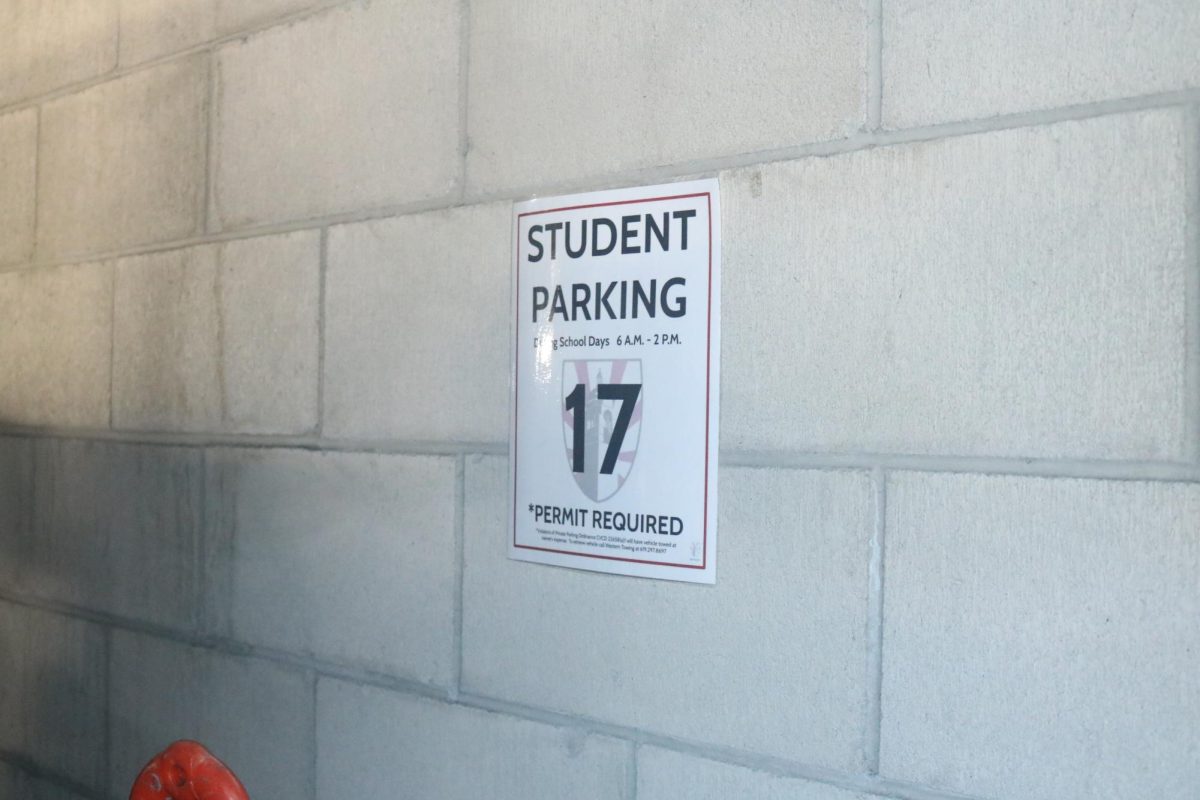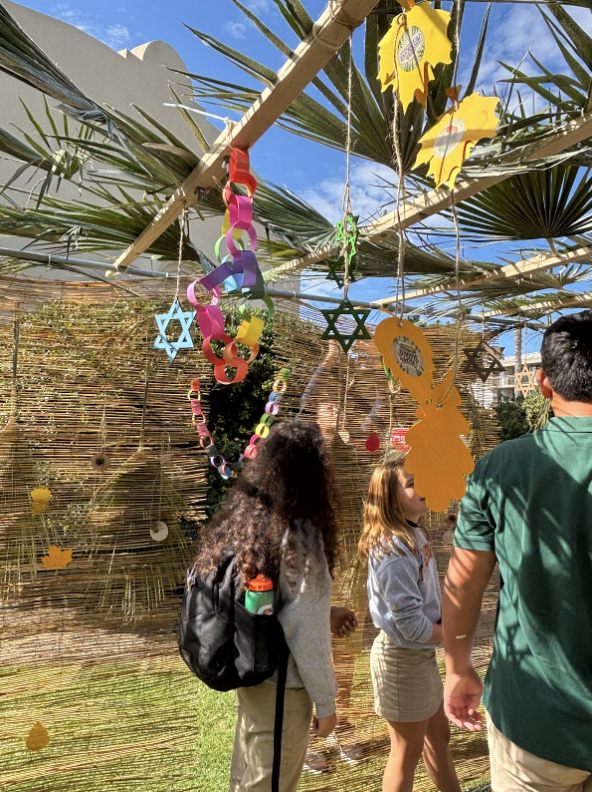“There was a super volcano that erupted in Alaska, which caused tsunamis, and also the sun to be blocked out. It was like a super tsunami that went all over the place,” Bishop’s Junior Model United Nations Club member Valerie Combs (‘30) described.
This imaginative crisis kickstarted the 48th annual San Diego Regional Junior Model United Nations Conference, held on April 9 and 10. 30 Bishop’s middle school delegates spent two days working amidst the chaos to create solutions for assigned issues, such as maintaining international trade and stopping piracy. In Valerie’s committee, this not only meant writing resolutions to filter water through hydroelectric dams or solving a refugee crisis, but also stopping China from declaring a nuclear war and watching the Secretary General “shoot Nerf guns at the head chairs” at the end of the conference.
However, before what Valerie explained is the best part of JMUN — the conference — the middle schoolers dedicated months to preparing for it. JMUN member Serena Wei (‘30) explained, “In JMUN, you write multiple papers such as a position paper and a resolution, both of which require tedious research and meticulous planning. There’ll also be a point where you have to write responses to other people’s papers, which will need considerate thinking since you’ll be saying this in front of them during the conference.”
Since October, JMUN member Anya Maru (‘29) explained that she spent time researching her country’s relationship with other countries, annotating a thick resolution packet, and even preparing “notes to amend the proposal before the conference.” Ms. Sara Islas, the faculty sponsor for JMUN, noted that since JMUN at Bishop’s is a club rather than a class, the middle schoolers are “doing everything really outside on their own time.”
Yet, “they all turned in the position papers, they all turned in their resolutions…they’re very dedicated and committed and I’m really proud of that,” Ms. Islas said.
The challenging process did not deter the students. In fact, JMUN member Meena Hernandez (‘29) explained, preparing for the conference “helped us build research and writing skills while learning about the global issue we were focusing on.” Serena added, “these skills are good for training for things like essays and just writing projects and assignments in general.”
At first, Ms. Islas explained, many students struggled with seeing their country’s involvement in a specific issue. For example, she said, “I’m [representing] Tanzania and the topic of my committee is the measles crisis in Central America. How can I possibly have anything to say about that? Because my country isn’t involved in that.”
Thus, the biggest research strategy students learn is “their ability to make connections between crises or global issues that involve or don’t involve them based on their country’s precedent,” Ms. Islas explained. “They understand that we’re all interconnected and every action that a country takes is like setting precedent and forming their policy.”
Alongside becoming a better writer and problem-solver, Valerie explained, “when you’re researching resolutions, you learn about a lot of just random things when you try to write a speech about them.” For example, one of the resolutions was building solar farms on top of government buildings. “I did a little bit of research into that and I realized that the height of the buildings was too high for the solar farms to actually be efficient,” she said. Valerie concluded, “JMUN helps you learn so many statistics about the world and I also learned a lot about other countries.”
Similarly, Serena explained, “A good thing about JMUN is that we tackle real world problems, such as humanitarian issues, resolving conflict zones, and poverty. It really delves into international affairs, and getting to help solve those problems can really strengthen your understanding of what’s going on in the world.”

This school year, the students’ hard work all came down to two special days in April, and as Anya simply put it, “I always look forward to the conference.” After learning so much from the research process, the conference provided a different — but equally valuable — learning experience for the students.
“My first JMUN conference was a complete game changer,” Anya said. One of Anya’s favorite parts about JMUN conferences is learning from the other students in her committee. “Many of the kids you meet are compassionate and extremely well prepared. They ask such thought-provoking questions and present detailed solutions. In addition, a few delegates have incredible qualities to learn from, such as being able to control the attention of the room, a skill that I need to work on,” she said.
“The way they possessed such eloquence and firmness in their decisions quickly sparked competition in me,” Anya added. Similarly, the committees make Meena feel “empowered to voice [her] opinions on important global issues in front of others.” After the conference, Meena explained that she felt more confident in public speaking, teamwork, and leadership.
Another aspect of JMUN both Meena and Anya love is the opportunity to meet new people. Anya explained, “you truly are creating strong connections, as over time, I began to recognize delegates from previous years and create informal alliances, all while catching up.”
This sense of camaraderie and connection was clear to Ms. Islas as she observed the students at the conference. Ms. Islas explained, “walking around the conference and seeing how engaged our delegates are and how they’re interacting with other delegates in such a kind way and really listening and really contributing and, and just really being present makes me feel really proud.” She continued, “Those moments where they’re interacting so intentionally are the moments that bring me so much joy because I just think all of our delegates are really good people and it’s awesome to see them spreading their goodness out into the larger world of the San Diego Regional JMUN conference.”
All in all, Anya explained, JMUN “provides a place for everyone: the debaters, the inquisitive, the problem solvers, the competitive, and quite literally any other background.” Anya explained that she was forced into JMUN, and was convinced that she would not consider coming back the next year. However, “JMUN easily became such an otherworldly experience for me, a feeling I carried during my 7th and 8th grade years, as I acquired a drive to be one of the best,” she said.
Ms. Islas explained that as the faculty sponsor, her goal is to inspire students to believe that “there is a solution to every problem if we can work together.” And for every middle school student who walked into the committee room unsure of what to expect, JMUN offered them an opportunity to find their voice and realize, even at a young age, that they have the power to build a better world.








